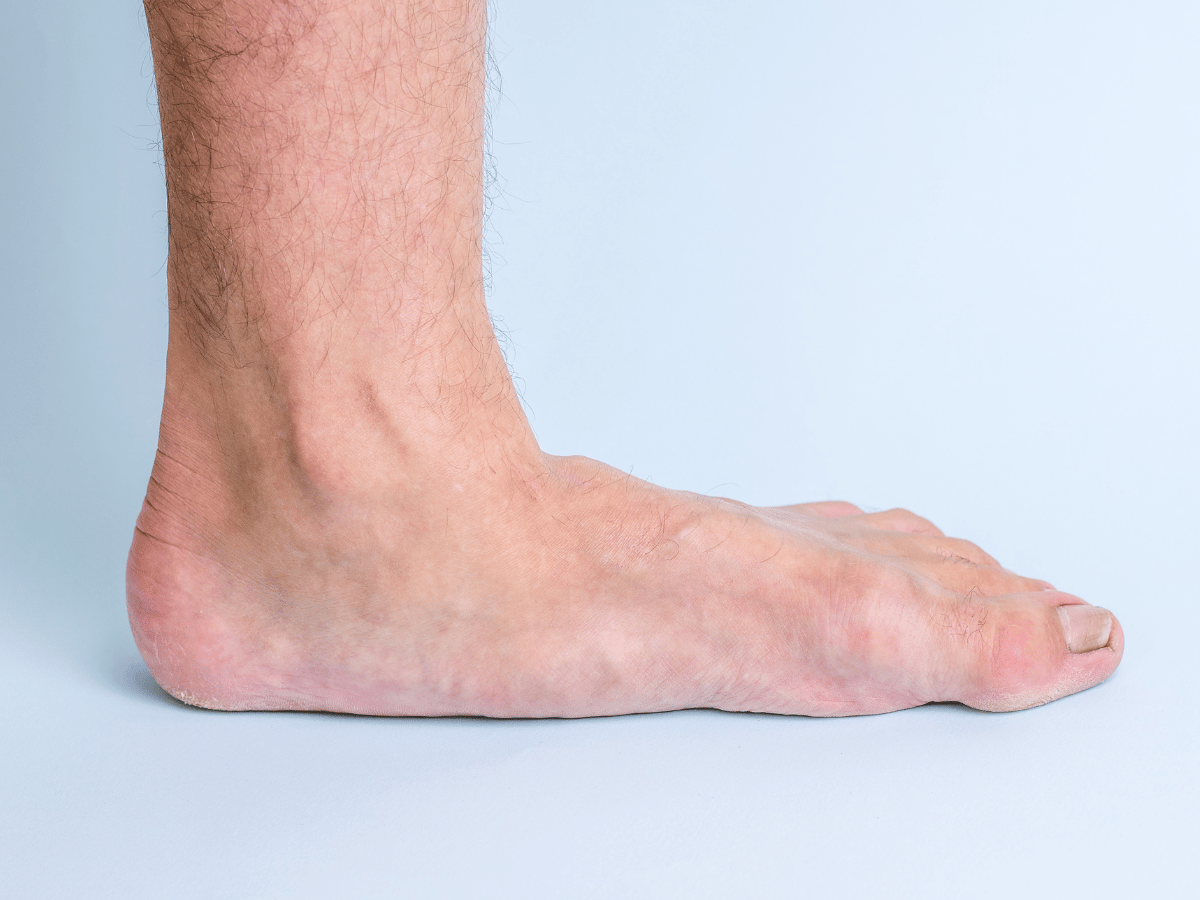
Imagine walking on a flat surface all day, with no spring or arch beneath your feet. That’s essentially what happens in flat foot, also known as pes planus. While it’s a relatively common condition, many people don’t realize how much it can impact daily movement, comfort, and even long-term joint health.
Flat foot can be mild for some but debilitating for others. Whether it’s your first time noticing flat arches, or you’re exploring ways to finally manage chronic foot pain, we’ve outlined everything you need to know, from underlying causes to the most effective treatments.
Flat foot refers to a condition where the arches on the inside of the feet collapse or fail to develop properly. When standing, the entire sole touches the ground. Some people are born with flat feet (congenital), while others develop it over time due to wear, injuries, or muscle and tendon dysfunctions, especially in the posterior tibial tendon.
While a flat foot doesn’t always cause discomfort, it can alter foot mechanics, leading to stress, imbalance, and pain across other joints like the knees and hips.
Let’s look at the numbers. Studies estimate that up to 25% of individuals may have some degree of flat foot. The majority remain asymptomatic. However, prevalence increases with factors like age, high body mass index (BMI), and lower limb injuries.
Women may be at higher risk, particularly as they age, due to hormonal and structural changes affecting ligaments and tendons. In children, flexible flat feet are extremely common and usually resolved by adolescence.
Flat foot is not always preventable, but understanding the leading causes can help us take a proactive approach.
Not all flat feet are symptomatic. However, when they do cause discomfort, symptoms are often hard to ignore. Common complaints include:
If pain persists, or you notice changes in how you walk, it’s time to consult a specialist.
Diagnosis typically starts with a visual and physical exam. Doctors may ask you to stand, walk, and tiptoe to gauge the arch’s flexibility and stability.
For many, flat foot treatment doesn’t involve surgery. Conservative options are frequently successful in alleviating pain and improving daily function.
When conservative care fails or flat foot becomes debilitating, surgical treatment might be the key to restoring function.
Recovery can take several months, and rehabilitation is vital. Many patients experience significant improvement in quality of life following surgery.
Left untreated, flat foot can lead to chronic discomfort, especially in the knees, hips, and lower back due to poor alignment.
Tips for prevention and management:
A pediatric flat foot is often flexible and pain-free. Most resolve naturally as the arch develops around age 6 to 8. However, intervention may be required if the condition is rigid or painful.
Adult flat feet, especially when acquired later in life, tend to be more symptomatic and structural. Management typically includes support inserts, therapy, or surgery for progressive cases.
As medical science advances, so do the ways we approach flat feet. Some exciting developments include:
These technologies will not just treat but predict how a patient’s foot will respond over time.
If you think you might be dealing with flat feet, don’t ignore the signs. At SFL Medical Group, our specialists combine deep expertise with cutting-edge tools to guide your healing journey. Schedule an evaluation today, and let’s work together toward getting you back on your feet.
Feeling discomfort in your feet, heels, or knees? You might be dealing with flat foot. Reach out to the experts at SFL Medical Group today and book your consultation.
Flat foot is a condition where the arch of the foot is lowered or absent. For some people, this doesn't cause symptoms. For others, it affects posture, walking mechanics, and leads to discomfort across knees, hips, and lower back.
Posterior tibial tendon dysfunction, genetics, obesity, aging, arthritis, trauma, and certain neurological conditions are among the top contributors.
You may notice your inner foot arch touching the floor when standing or walking. Pain along the arch or ankle is also a common indicator. Diagnostic confirmation typically comes from physical examination and imaging tests.
Standard tests include the “too many toes” sign, foot flexibility evaluations, X-rays for skeletal structure, and MRI or ultrasound to assess tendon function.
Orthotics, physical therapy, NSAIDs for inflammation, proper footwear, and weight control are proven to help manage symptoms.
If conservative methods fail, and pain or instability interfere with daily life, surgery may be appropriate. Candidates are evaluated based on the severity and causes of the condition.
Yes, towel scrunches, heel raises, and ankle inversion exercises can help strengthen supporting muscles and tendons.
In kids, it’s often flexible and painless, resolving with age. Painful or rigid flat feet should be evaluated. Adult cases tend to stem from degenerative processes and are more likely to require intervention.
Your well-being is our top priority. Reach out today to discover how our dedicated team can support your health journey.
Have questions or want to learn more? Use the form below to get started!
Connect with South Florida’s trusted multispecialty care team and take control of your health with compassion and convenience.
©2025 South Florida Multispecialty Medical Group. All Rights Reserved.